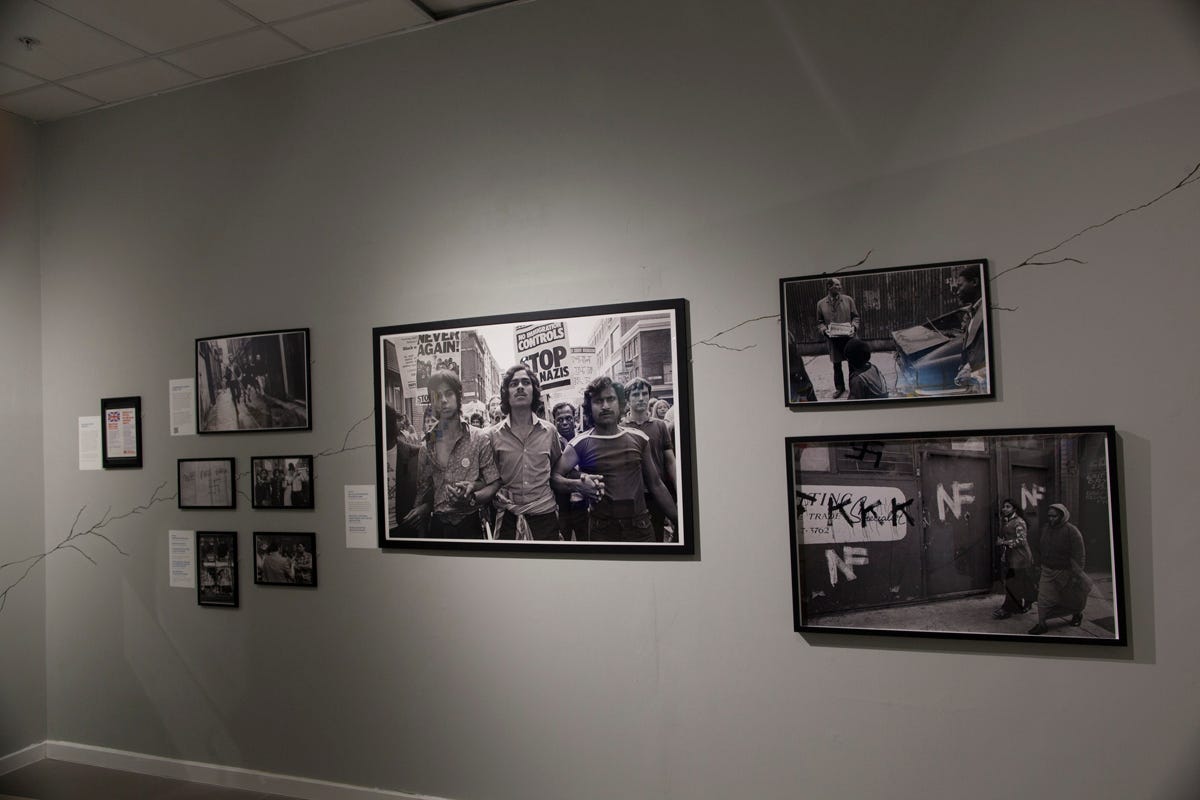Britishness can't be untangled from migration. A new exhibition drives the message home.
The Migration Museum sits in one of London's most diverse neighbourhoods, once the scene of fierce clashes with the Far Right. A new, timely installation opened last week - we went to take a look.
The Migration Museum's latest exhibition, All Our Stories, is aptly located in Lewisham Shopping Centre, a diverse area with a history of anti-racism. One archival display features a National Front pamphlet from the 1970s, the kind used to recruit locals to join the far-right group in its heyday. “Make Britain GREAT again,” it reads, alongside calls to stop immigration and prioritise housing for British people. It's unsettling how these views still echo in today’s debates about immigration policy and just how normalised they’re becoming.
The National Front’s anti-immigrant threat was real. It was particularly felt on 13 August 1977, when the group attempted to march from New Cross to Lewisham town centre, but for the first time, such a march was prevented from reaching its destination by anti-racists - both Lewisham locals and members of left-wing political organisations. The violent clashes of what is now known as the ‘Battle of Lewisham’ prompted the first-ever deployment of plastic riot shields by police on the UK mainland, later to become a staple image of law and order in the 1980s.
“In the light of recent racist violence targeting migrant communities and ethnic minorities across the UK and with the museum moving towards a permanent central London site, this exhibition couldn’t be more timely or important,” says Aditi Anand, Artistic Director at the Migration Museum and lead curator of the exhibition. As well as focusing on the role of the media in amplifying harmful narratives through decades — timely, given that racist and xenophobic riots gripped parts of the country this summer — the exhibition explores many other aspects of migration and the ways it has shaped Britain.
A Chinese takeaway installation, guest-curated by author Angela Hui, was inspired by her experiences growing up behind the counter of her parents’ takeaway in Wales. This piece prompts visitors to consider different aspects of settling in an unfamiliar place — the struggles, humiliations and disappointments that come with it, but also the joy and friendship. Eventually, that unfamiliar place becomes home.
The immersive two-sided painting by artist Jiro Osuga is a room-sized imaginary departure lounge, showing real and imagined characters waiting to board their flights. Not only are people travelling from different countries, some appear to be from different centuries. The work captures the chaos of the airport, depicting round-the-clock workers, excited travellers and exhausted passengers so worn out that they’ve collapsed to sleep on the floor.
The exhibition’s main strength lies in its ability to explore migration on both a large scale and through deeply personal lenses. A short film by award-winning filmmaker and animator Osbert Parker illuminates key migration moments throughout history. Drawing on archival materials, it weaves together personal and historical migration narratives that intersect and unfold in powerful ways. This broad overview is complemented by poignant moments, like those captured by photographers in refugee camps. One photograph by Christian Sinbaldi stands out: boys playing cricket in Calais in 2015. Vignettes like these restore a sense of humanity often lost in flattened mainstream discussions of migration.
The exhibition’s immersive installations, spanning art, film, photography, and personal stories, offer an experience so rich and varied that it’s impossible to take it in one visit. It’s a show well worth visiting more than once.
All Our Stories runs until December 2025. Admission is free to all visitors. Museum of Migration, Lewisham Shopping Centre, London SE13 7HB.





